Introduction to the Port
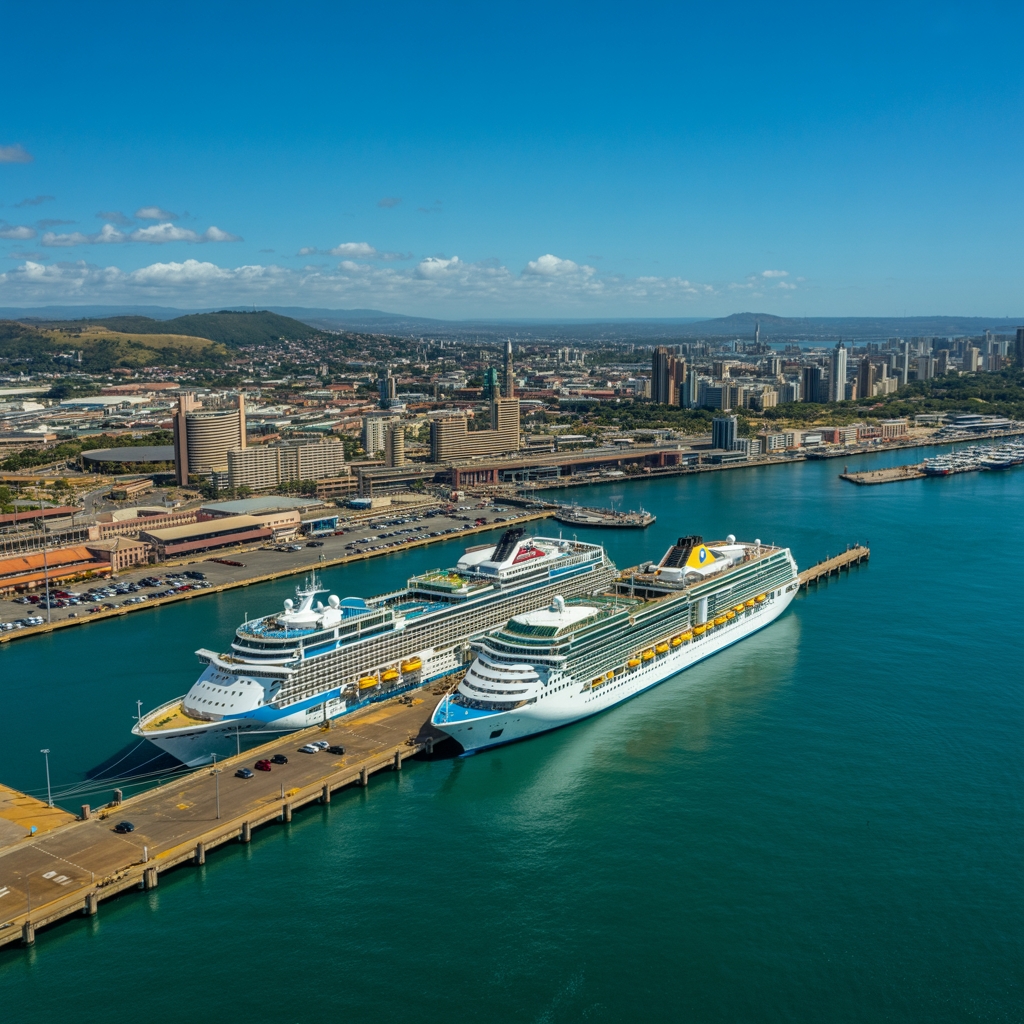
Envision this: you’re stepping off your cruise ship onto African soil, and the warm Durban air hits you with hints of ocean salt and that unmistakable energy of a bustling port city.
For other South Africa Cruise Ship destinations check out our South Africa Cruise Ship Port Guide page.
The sounds are incredible – seagulls calling overhead, the gentle hum of harbor activity, and maybe a bit of Zulu music drifting from the nearby markets. This isn’t just any cruise terminal, it’s South Africa’s shiny new crown jewel, and honestly, the views of the Indian Ocean stretching endlessly to the horizon might just make you forget you’re technically still at a port.
Now, I know what you’re thinking – another cruise port, another maze of confusion trying to figure out where everything is and how to make the most of your time.
But here’s the thing about Durban’s cruise terminal: it’s surprisingly user-friendly, and I’m going to walk you through everything you need to know.
From the smartest ways to navigate those first vital hours in port to the concealed treasures that most passengers completely miss, we’ll cover the practical stuff that actually matters when you’re trying to squeeze the most exploration out of your South African stop.
Map of Durban Cruise Ship Port
Why Cruise From this Port?
Durban isn’t just another departure point – it’s your gateway to cruise itineraries that most people only dream about, and trust me, the routes from here will spoil you for pretty much anywhere else.
- Indian Ocean island hopping to Mauritius, Réunion, and the Seychelles with those picture-perfect beaches
- Mozambique excursions where you can snorkel in waters so clear you’ll think your mask is broken
- Madagascar exploration for wildlife encounters that’ll make your friends back home ridiculously jealous
- Seasonal repositioning cruises to Europe and Asia if you’re feeling ambitious about your vacation time
- Regional South African coastal routes that combine game reserves with ocean views
“What makes Durban special is that we’re the only port in Southern Africa providing this variety of Indian Ocean itineraries year-round,” explains Sarah Mitchell, Senior Port Development Manager at KwaZulu Cruise Terminal.
“Passengers tell us they choose us because they can see lemurs in Madagascar one week and then be diving with whale sharks off Mozambique the next – that’s not something you get departing from Miami.”
Cruise Terminal(s) Overview
Durban’s cruise setup is invigoratingly straightforward – you’ve got one main terminal that actually knows what it’s doing, unlike some ports where you feel like you’re maneuvering through a bureaucratic maze just to find your ship.
| Terminal | Facilities | Distance to City Centre | Walkable | Luggage Storage | WiFi Availability (Yes/No) |
|---|---|---|---|---|---|
| Point Waterfront Cruise Terminal | Shopping areas, dining options, immigration services, dedicated security, baggage handling, check-in systems, medical facilities | 3km | No | Yes | Yes |
The terminal might be newer than your smartphone, but it’s already handling the big ships like a seasoned pro – which, honestly, is exactly what you want when you’re wheeling three overpacked suitcases and trying to remember if you packed your seasickness tablets.
Transport Options to the Port (From City Centre)
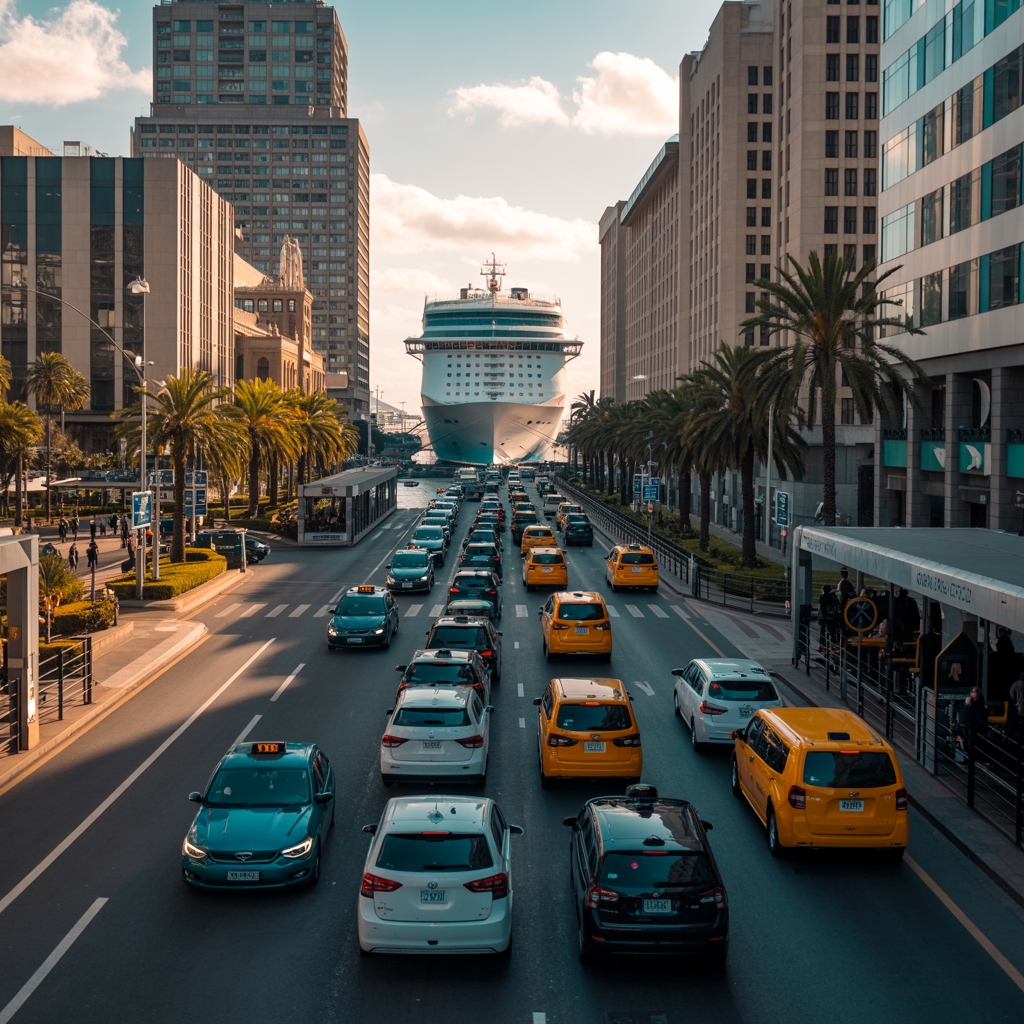
Getting from Durban’s city center to the cruise port is invigoratingly simple, with options ranging from budget-friendly buses to private transfers that’ll treat you like royalty.
| Transport Option | Cost Estimate (€/$) | Travel Time | Frequency | How to Book/Use |
|---|---|---|---|---|
| Private Transfer | $46+ per group | 15-60 minutes | On-demand | Book through Zaf Travel or Viator online |
| Metered Taxi | Variable fare | 15-45 minutes | 24/7 availability | Hail at pier/city or pre-book with local companies |
| Public Bus | $10-12 (R160-190) | 26 minutes | 5 daily departures | Buy tickets online via Margate Coaches |
| Hotel Shuttle | Varies by hotel | 20-50 minutes | Limited schedule | Book during hotel transfer checkout |
| Walking | Free | 10 minutes | Always available | Not recommended due to safety concerns |
How to Get from the Airport to the Cruise Port
Getting from King Shaka Airport to the cruise port gives you several solid choices, from budget buses that’ll save your wallet to private transfers where someone else handles all the stress.
| Transport Option | Cost Estimate (USD) | Travel Time | Key Details | How to Book |
|---|---|---|---|---|
| Private Transfer | $50-120 | 20-30 minutes | Door-to-door, flight tracking, free cancellation | Viator or Suntransfers online, book 48+ hours ahead |
| Public Bus | $10-13 | 36 minutes | Cheapest option, limited luggage space | Buy tickets at airport or mobile apps |
| Cruise Shuttle | $20-40 | 25-35 minutes | Syncs with cruise times, group-friendly | MSC website or travel agents |
| Taxi | $30-45 | 25 minutes | Metered or fixed rates, 24/7 available | Airport taxi stand or pre-book |
| Ride-share | $30-45 | 25 minutes | App-based booking required | Uber/Bolt apps |
Parking and Accessibility at the Port
You’ll want to know your parking options before you arrive, because nothing kills that cruise excitement like circling around looking for a spot.
- On-site parking costs R50-R200 depending on how long you’re staying, with 254 spots available first-come, first-served (no reservations, which feels a bit stressful)
- Long-term cruise parking runs R140-R200 per night – MSC passengers pay R150-R200, and you’ll need your cruise ticket to get in
- Free parking for quick stops under 20 minutes if you’re just dropping someone off
- Self-service only means you’re hauling your luggage 300-400 meters to check-in, so pack light or bring a good rolling bag
- Third-party options like ParkVia offer meet-and-greet service for R134.68/day (use code EASTER2025 for 5% off)
- Wheelchair-accessible facilities throughout including ramps, accessible bathrooms, and baby-changing stations for families
- No shuttle services from parking – you’re walking or catching a taxi/ride-share at the terminal
- Parking closes at 8 PM daily and reopens for the next cruise, so don’t expect late-night access
Common Mistakes First‑Time Cruisers Make at the port
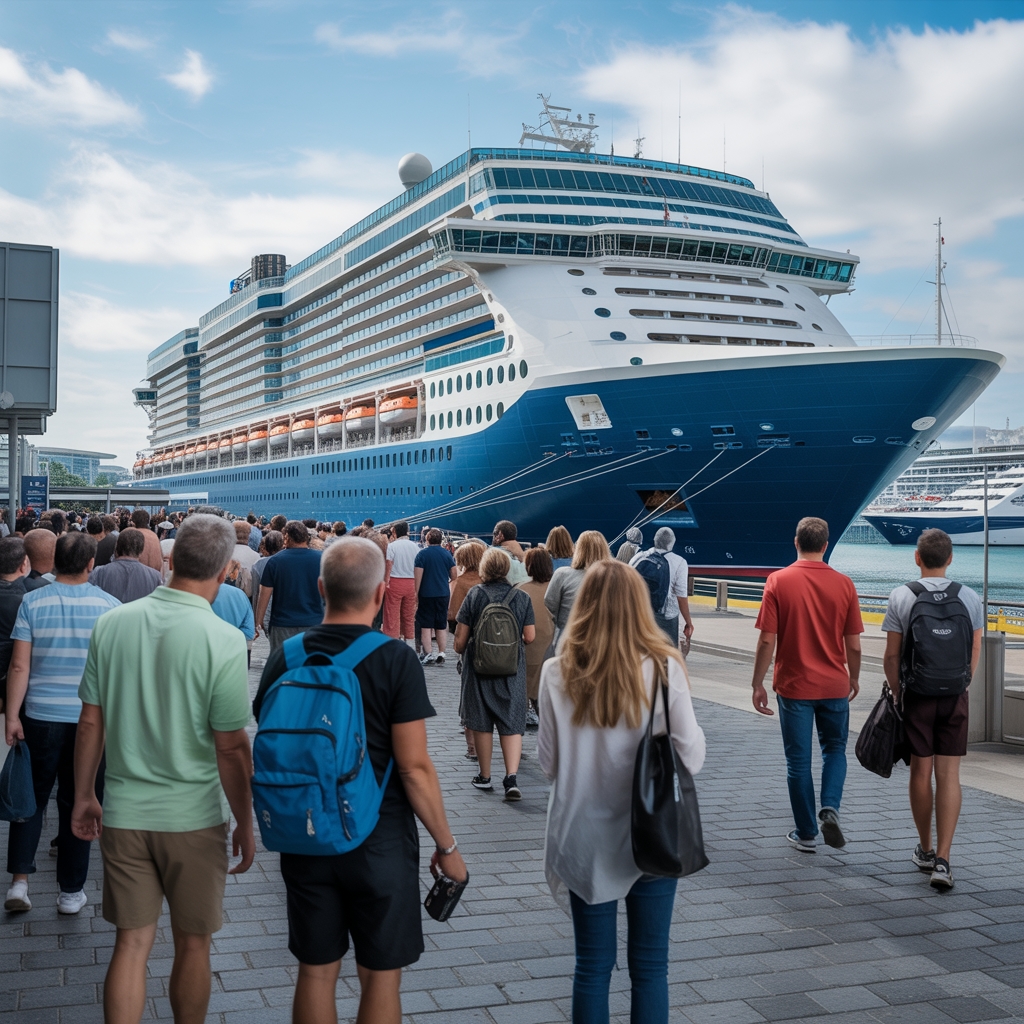
First-time cruisers at Durban port tend to make the same avoidable mistakes that can turn their dream vacation into a stress fest.
- Booking shore excursions on the ship instead of researching ahead – you’ll pay 20-50% more and get stuck with crowded, generic tours when the good stuff sells out.
- Forgetting to bring enough South African rand for local markets – those beautiful beadwork stalls and spice vendors don’t take your credit card, and the ship’s currency exchange will eat you alive with fees.
- Not making copies of your passport – Durban port authorities need documentation for disembarkation checks, and you don’t want to be that person holding up the line.
- Wearing the wrong shoes for cobblestone streets – those cute sandals won’t cut it when you’re exploring historic areas or hiking around port towns.
- Skipping hand sanitizer after touching railings and elevator buttons – with 3,000+ passengers sharing everything, a little paranoia goes a long way.
- Assuming you don’t need travel insurance – medical emergencies during shore excursions happen, and you don’t want to find out the hard way what helicopter evacuation costs.
- Relying only on ship Wi-Fi at $25 per day – grab a local SA data bundle instead and save your money for something fun.
- Not checking if independent tour operators offer back-to-ship guarantees – missing your departure because your guide got lost isn’t the journey you signed up for.
Things to do Near The Port
- Markets of Warwick – historic bazaar packed with Zulu crafts, aromatic spices, and enough cultural immersion to make your head spin.
- Durban Botanic Gardens – Africa’s oldest surviving botanical garden with golf cart tours for those who want nature without the workout.
- Suncoast Casino and Entertainment Complex – beachside complex with movies, restaurants, and gaming tables if you’re feeling lucky.
Short Walks Close to the Port
When you need to stretch your legs after being cooped up on a ship, Durban’s port area provides some surprisingly pleasant strolls that won’t leave you wondering if you’ll make it back in time.
| Name | Start Point | Distance | Time Needed | Highlights |
|---|---|---|---|---|
| uShaka Marine World Walk | Cruise terminal exit | 800m | 15-20 minutes | Southern Hemisphere’s largest aquarium, shipwreck tunnel, beach access with clear signage |
| Golden Mile Promenade | Port exit gate | 1.2km | 25-30 minutes | Paved oceanfront path, benches every 150m, connects to Moses Mabhida Stadium |
| Victoria Street Market Route | Main dock area | 1km | 12-15 minutes | Cultural heritage plaques, 160+ vendor stalls, covered walkways with escort service |
| Port Viewing Platform | Port authority building | 400m | 10-12 minutes | Elevated harbor views, cargo ship watching, historical displays (8 AM-6 PM only) |
Dining and Shops Within Walking Distance of the Port
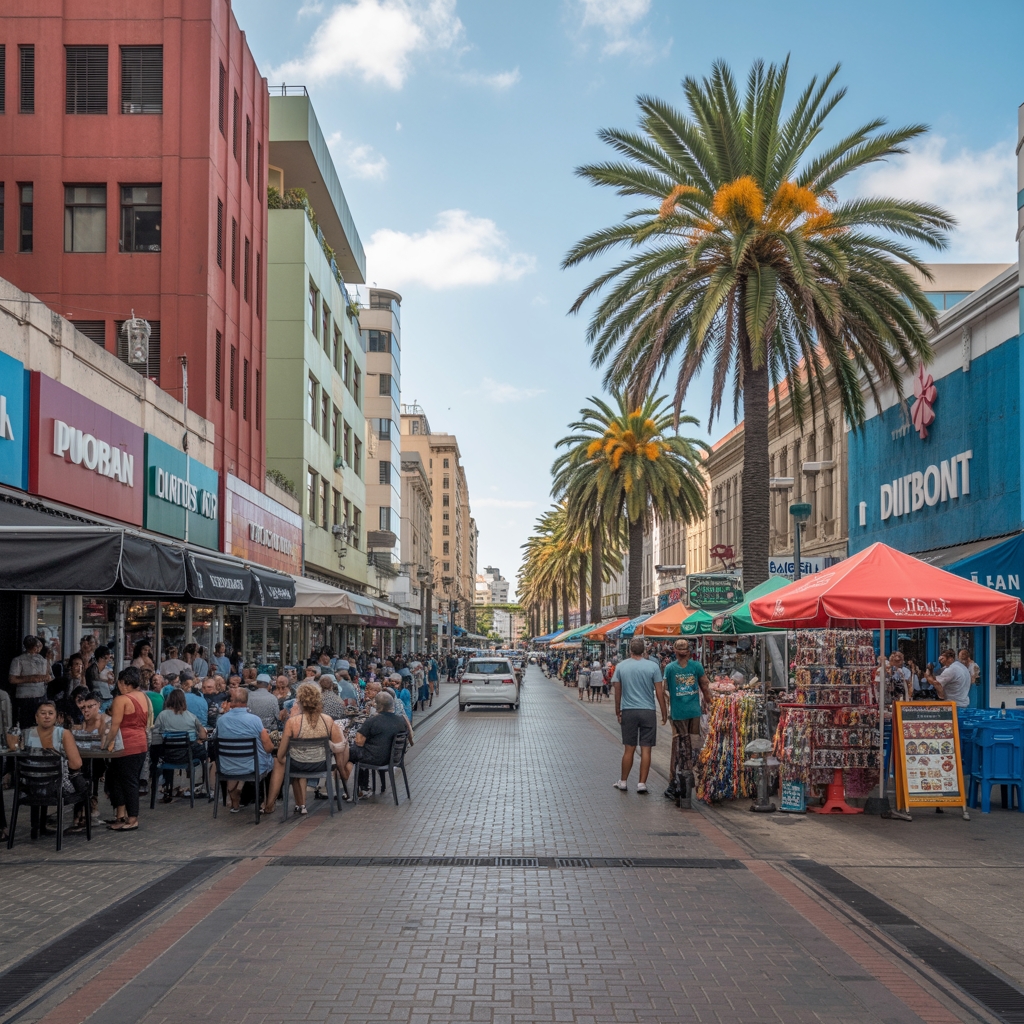
You won’t go hungry or empty-handed around Durban’s cruise port, where the dining scene ranges from quick bites to sit-down meals that’ll make you forget you’re technically still in transit.
See what’s on offer from the Port of Cape Town for a different South Africa Cruise Ship destination.
Family-Friendly Restaurants Near the Terminal
- Little India Restaurant – Authentic curry dishes and vegetarian options, just 300 meters from the main gate with kid-friendly mild selections.
- Cargo Hold Restaurant – Famous for its massive shark tank that mesmerizes children while parents enjoy fresh seafood and steaks.
- Spur Steak Ranch – South African chain known for generous portions, balloon animals, and that special sauce kids seem to love.
- Mozambik Wilsons Wharf – Portuguese-African fusion with outdoor seating, sharing platters, and a relaxed atmosphere that works for all ages.
- Ocean Terrace Restaurant – Waterfront views with simple grilled fish, burgers, and ice cream that keeps everyone happy.
Quick Service Options for Time-Pressed Travelers
- KFC Point Road – Two locations within 400 meters of the port, because sometimes you just need something familiar and fast.
- Ciao Bella Café – Espresso, pastries, and sandwiches perfect for a grab-and-go breakfast before your ship departs.
- Wimpy Durban Point – South African institution serving burgers, milkshakes, and all-day breakfast items in under 15 minutes.
- Fish & Chip Co – No-frills takeaway with crispy hake and chips, wrapped in paper the traditional way.
- Steers Wilson’s Wharf – Local burger chain with flame-grilled patties and the famous “monkey gland” sauce that’s surprisingly addictive.
Unique Dining Adventures Worth the Walk
- Julio’s on the Bay – Waterfront dining where you can watch ships come and go while enjoying fresh prawns and line fish.
- Roma Revolving Restaurant – Slowly rotating venue providing 360-degree harbor views, though the novelty might outweigh the food quality.
- The Lighthouse Café – Perched on the old harbor wall with lighthouse memorabilia and surprisingly good coffee that locals actually drink.
- Capsicum Restaurant – Bunny chow specialists serving this Durban curry-in-bread invention that you can’t get anywhere else.
- Zatoon Restaurant – Halal Indian cuisine in a restored heritage building with spice levels that range from tourist-friendly to tear-inducing.
Shopping Areas Within Easy Walking Distance
- The Point Waterfront – Small shopping center with curio shops, clothing stores, and that awkward souvenir browsing we all do.
- Wilson’s Wharf Shopping – Boutique stores selling local crafts, jewelry, and clothing with better quality than typical port shops.
- Victoria Street Market – Massive indoor market with spice vendors, fabric sellers, and negotiating opportunities that feel like a cultural encounter.
- uShaka Marine World Gift Shops – Overpriced but convenient for last-minute gifts, plus the kids will definitely spot something they “need.”
- Gateway Shopping Centre – Larger mall requiring a short taxi ride but worth it for serious shopping with familiar international brands.
Local Specialties You Should Try Before Leaving
- Bunny Chow – Hollowed-out bread loaf filled with curry, invented in Durban and best eaten with your hands despite the mess.
- Durban Indian Sweets – Gulab jamun, jalebi, and barfi from local sweet shops that have been perfecting recipes for generations.
- Boerewors Rolls – Spiced sausage in a roll that’s South Africa’s answer to hot dogs, available from street vendors near the port.
- Samoosas – Triangular pastries filled with mince, vegetables, or lentils, perfect for snacking while walking back to your ship.
- Roti and Curry – Flatbread with various curry options, often served on banana leaves at authentic Indian establishments.
Emergency Contacts at the Port
When something goes sideways in Durban, you’ll want these numbers saved in your phone before you need them.
- Durban Port Call Centre: 086-010-9330 – Your go-to for general port emergencies and lost boarding passes
- SAMSA Coastal Emergency: 076-859-6790 – Maritime safety authority for serious vessel incidents
- Port Control (24/7): 031-361-8567 – Ship arrivals desk that also handles vessel accidents and tourist police
- National Sea Rescue Institute: 112 – The big red button for medical emergencies, ambulances, and distress calls
- Port Security: 031-361-8918 – Security issues, suspicious activity, or when you’re locked out somewhere you shouldn’t be
- Harbourmaster: 031-361-8496 – Captain Sabelo Mdladlose handles maritime disputes and harbor incidents
- Fire Emergencies: 031-361-8804 – Connected to port engineering for infrastructure fires
- MSC Cruises SA: 011-844-6073 – Your cruise line’s local emergency coordination
- Durban Metro Police: 031-361-0000 – Non-emergency police matters and general assistance
Environmental Initiatives at the Port
Beyond keeping you safe during port visits, Durban’s cruise terminal has become South Africa’s first facility pursuing LEED certification – a global green building standard that’s reshaping how ports operate.
You’ll dock at a terminal with shore power capability that reduces emissions by 8% during energy efficiency trials. The port’s hybrid exhaust gas cleaning systems cut sulfur oxides by 98%, while selective catalytic converters transform nitrogen oxides into harmless nitrogen and water.
You’ll also benefit from 100% ballast water filtration, zero-discharge waste policies, and advanced wastewater treatment systems that protect marine ecosystems throughout your visit.
Brief History of the Port
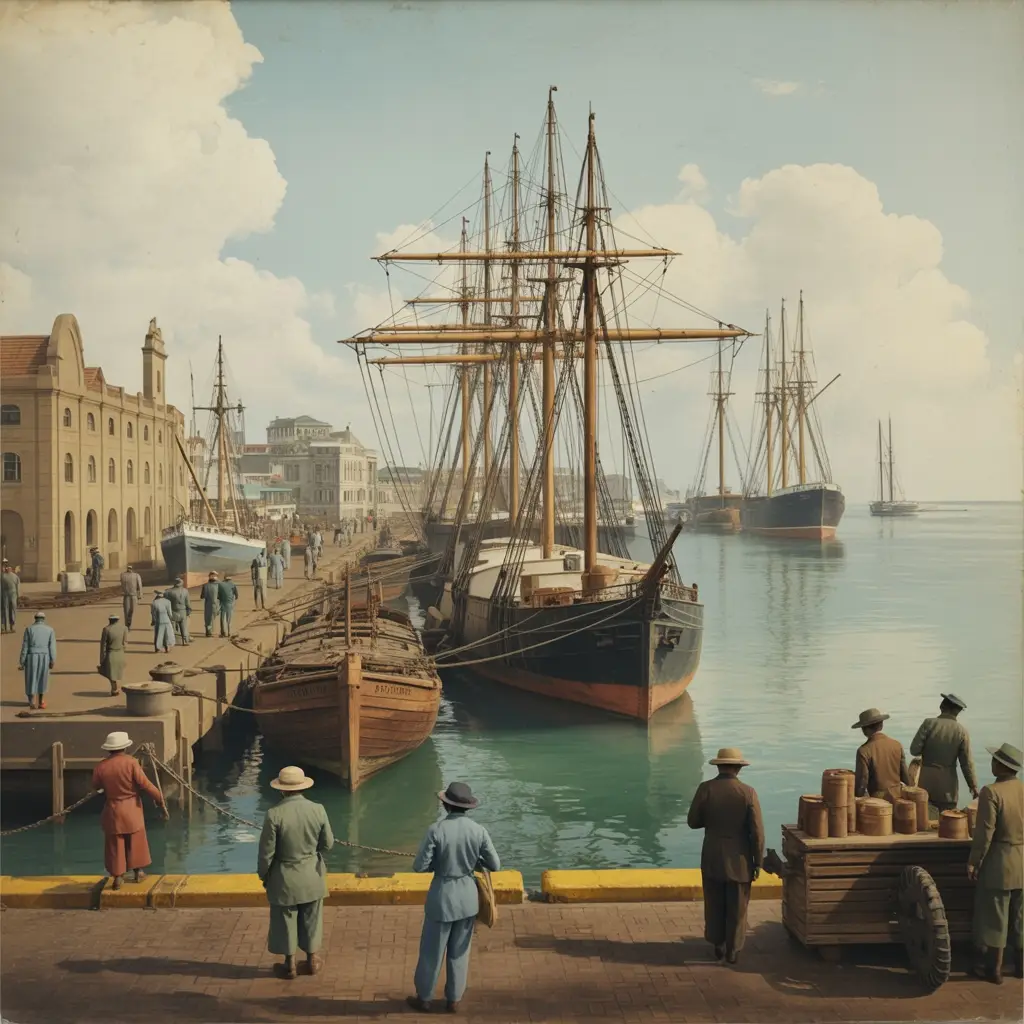
The natural harbor formed by the Bay of Natal has welcomed vessels for centuries, beginning with indigenous communities who first recognized its sheltered waters as an ideal refuge along Africa’s eastern coast.
British settlers established a permanent presence in 1824, creating “Port Natal” before renaming it Durban in 1835.
You’ll find the port’s growth accelerated with railway connections to coalfields in the late 19th century, transforming it into a critical bunkering hub.
Coal-handling systems installed between 1914-1917 boosted efficiency to 600 tons per hour.
Frequently Asked Questions
What Vaccinations Are Required for Cruise Passengers Departing From Durban?
You’ll need yellow fever vaccination if arriving from risk countries. COVID-19 vaccines aren’t mandatory but may require negative tests. Consider routine vaccines like hepatitis A/B, typhoid, and tetanus boosters.
Can I Store Luggage at the Port if Arriving Early?
You can’t store luggage at Durban Cruise Port for early arrivals. There aren’t dedicated facilities available. You’ll need to use third-party services like Vertoe or arrange storage with nearby hotels beforehand.
What Is the Port’s Policy on Bringing Alcohol Onboard?
You can’t bring alcohol onboard at Durban port due to local regulations requiring locked storage during port calls. Your cruise line’s specific policies determine what’s permitted when you commence elsewhere.
Are There Currency Exchange Services Available at the Cruise Terminal?
You’ll find no dedicated currency exchange facilities inside the cruise terminal itself. However, banks and FX providers sometimes set up temporary counters during peak seasons, and exchange services are available nearby.
What Happens if My Flight Is Delayed and I Miss Embarkation?
You’ll need to contact the cruise line’s emergency team immediately and document your delay. You might join at the next port, but you’ll cover all transportation costs and risk losing your cabin fare.
Thinking about something different? Check out the cruises leaving from Port Elizabeth (Gqeberha) Cruise Ship Port.
